Travel & Outdoors
The Conowingo Dam is One of the Best Spots in the U.S. for Seeing Bald Eagles
From November through January, eagle-eyed birdwatchers arrive from far-flung destinations to view hundreds of the birds that have migrated from New York and Canada.
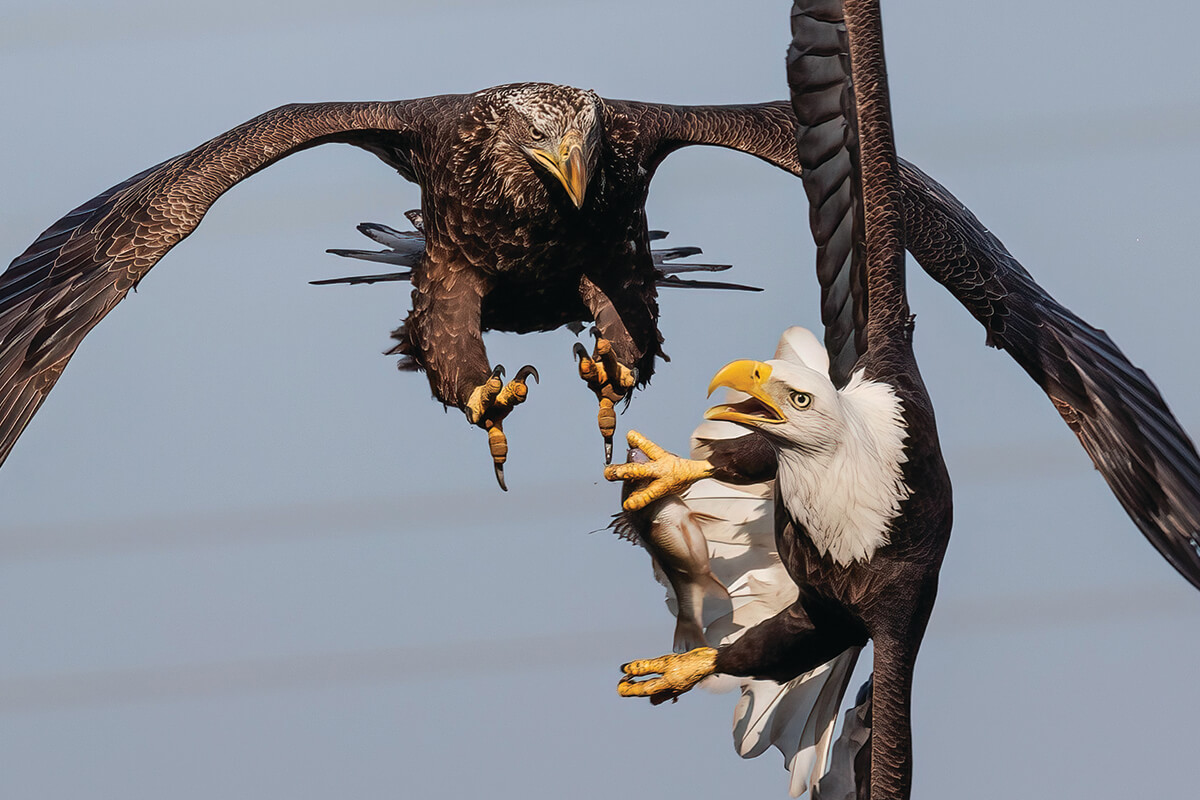
“I grew up on the other side of the river,” says Bob Gilley, pointing across the Susquehanna River and letting his Canon camera and 800-mm lens dangle from his neck. “My dad used to bring me and my younger brother fishing here. He worked at the General Motors in Wilmington for 30 years and we lived in Elkton and that’s what we did on the weekends.”
The 68-year-old, recent retiree gestures across the river again. “Look at those great blue herons,” he says, with a nod toward a long row of the statuesque birds, which appear as absorbed by the same pair of brawling bald eagles (see above photo) that Gilley and a huge gaggle of photographers from this side of the river are focused on.
“Walleye, shad, catfish. Striped bass, you name it,” says Ferd Brundick, Gilley’s buddy, jumping in. “There’s great fishing here. That’s why bald eagles love this place, too. It’s almost cheating for them.”
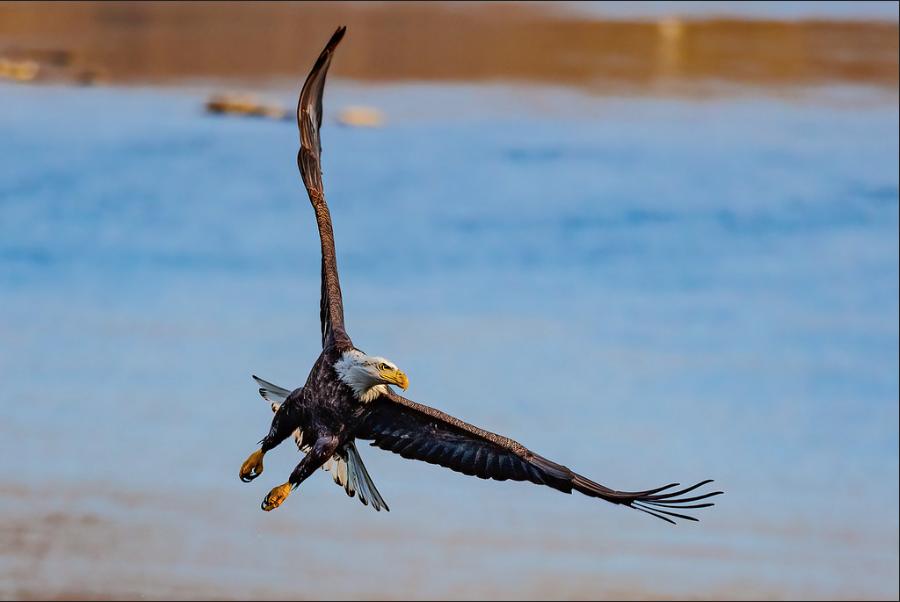
The Susquehanna is the East Coast’s longest river and this section, just below the Conowingo Dam, is the best spot east of the Mississippi for seeing the national symbol in its natural habitat. Dozens of bald eagles make their permanent home in Susquehanna State Park and the surrounding environs, building nests that weigh more than 1,000 pounds and are large enough for a person to stand in.
From November through January, another 200 bald eagles typically migrate to the area from New York and Canada, when lakes and rivers up north freeze over and limit fishing access. Eagle-eyed birdwatchers arrive from farther-flung destinations, including Europe and Asia.
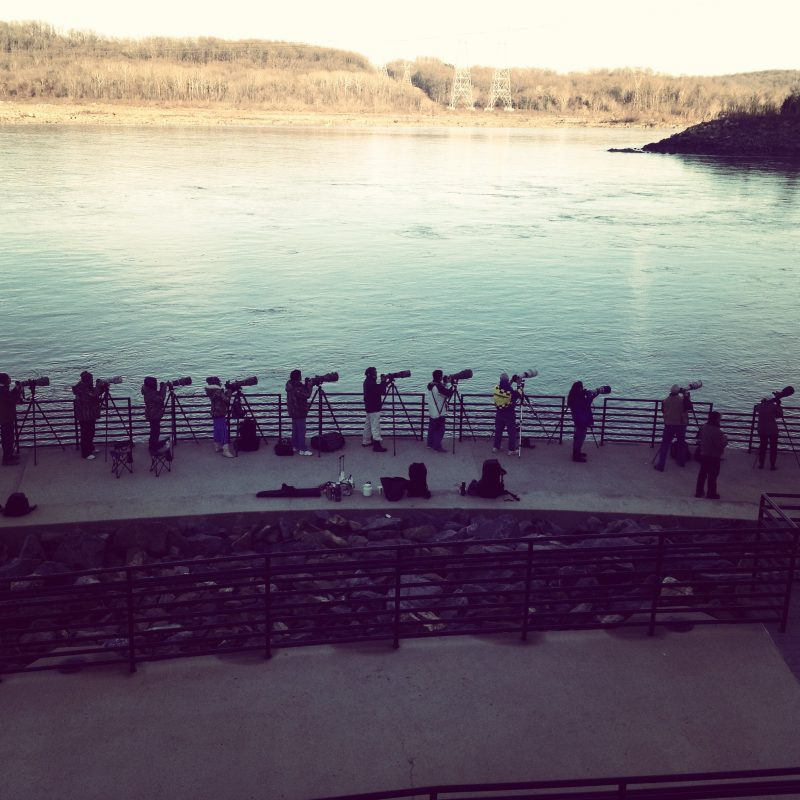
The turbines in the 1928-built dam stun and sometimes kill the fish swimming downriver, making hunting easy for bald eagles, who can spy fish from hundreds of yards away and speed-dive at 100 mph to pluck prey from the water. Toting the fish back to a tree branch for lunch is a different matter. Rival bald eagles often swoop in after the initial catch, attempting to strip the fish—not unlike a Baltimore Ravens defender trying to create a turnover—and steal it. Bald eagles bully other birds as well.
“It’s not unusual to see a fish change hands two, three, or four times at the dam,” says Dave Lychenheim, who founded the popular Facebook page Conowingo Bald Eagles, which has more than 27,000 followers. “They crash into each other and are so fast that when they knock a fish loose, they’re able to catch it in midair before it hits the water. I saw it happen five times once.”
Discovering the bald eagles at Conowingo, says Lychenheim, a longtime amateur photographer, changed his life. This winter, the former NASA aerospace engineer is leading a birding and photography trip to Peru.
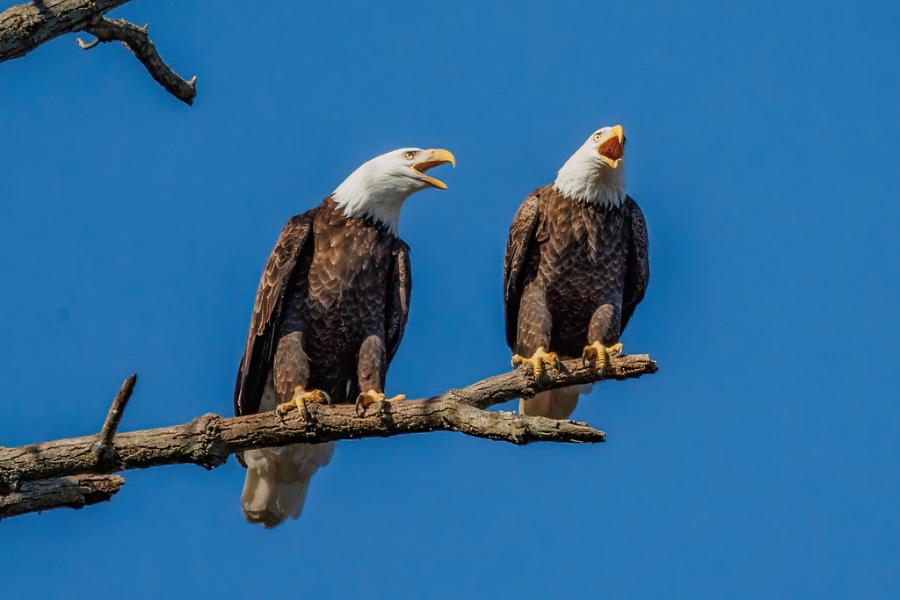
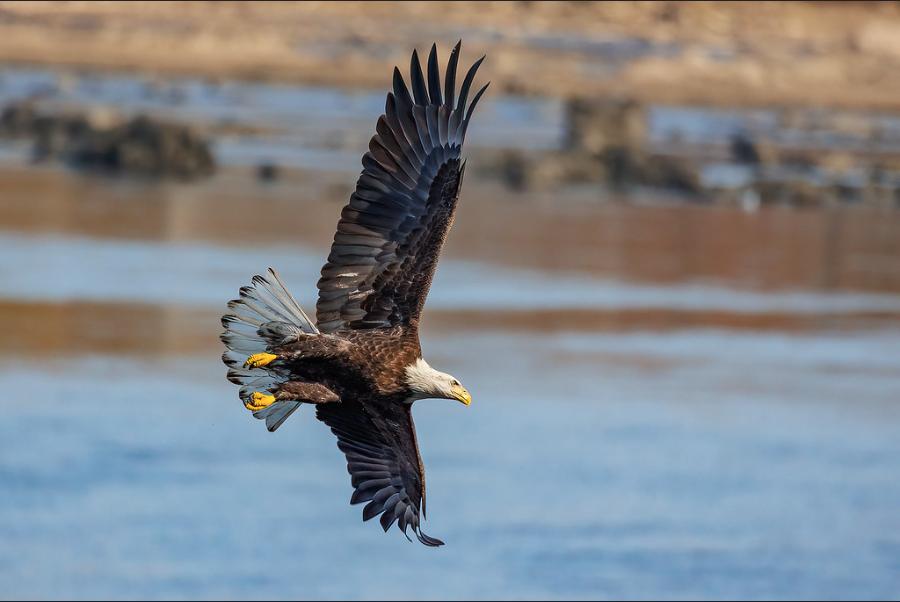
America’s favorite bird took a beating in the U.S. for a long time, nearly becoming extinct. First their decline was due to hunting and a loss of habitat, and, after World War II, the pesticide DDT took a devastating toll. But with a ban on DDT in 1972—thank you, Rachel Carson—and natural-habitat protection afforded by the Endangered Species Act, the North American bald eagle has made a remarkable comeback in recent decades. (“Bald” actually derives from “piebald,” meaning composed of two colors: brown and, once they reach five years old, their distinctive white head, wing, and tail feathers.)
Not all the Founding Fathers appreciated the bald eagle, however. Ben Franklin, notably, did not think much of the big bird. He stated, in a well-known letter to his daughter, that he wished it had not been chosen as the representative of the fledging democracy, describing it as, “a bird of bad moral character.”
Wrote the author of Poor Richard’s Almanack: “He does not get his Living honestly. You may have seen him perched on some dead Tree near the River, where, too lazy to fish for himself, he watches the Labour of the Fishing Hawk; and when that diligent Bird has at length taken a Fish, and is bearing it to his Nest for the Support of his Mate and young Ones, the Bald Eagle pursues him and takes it from him.”
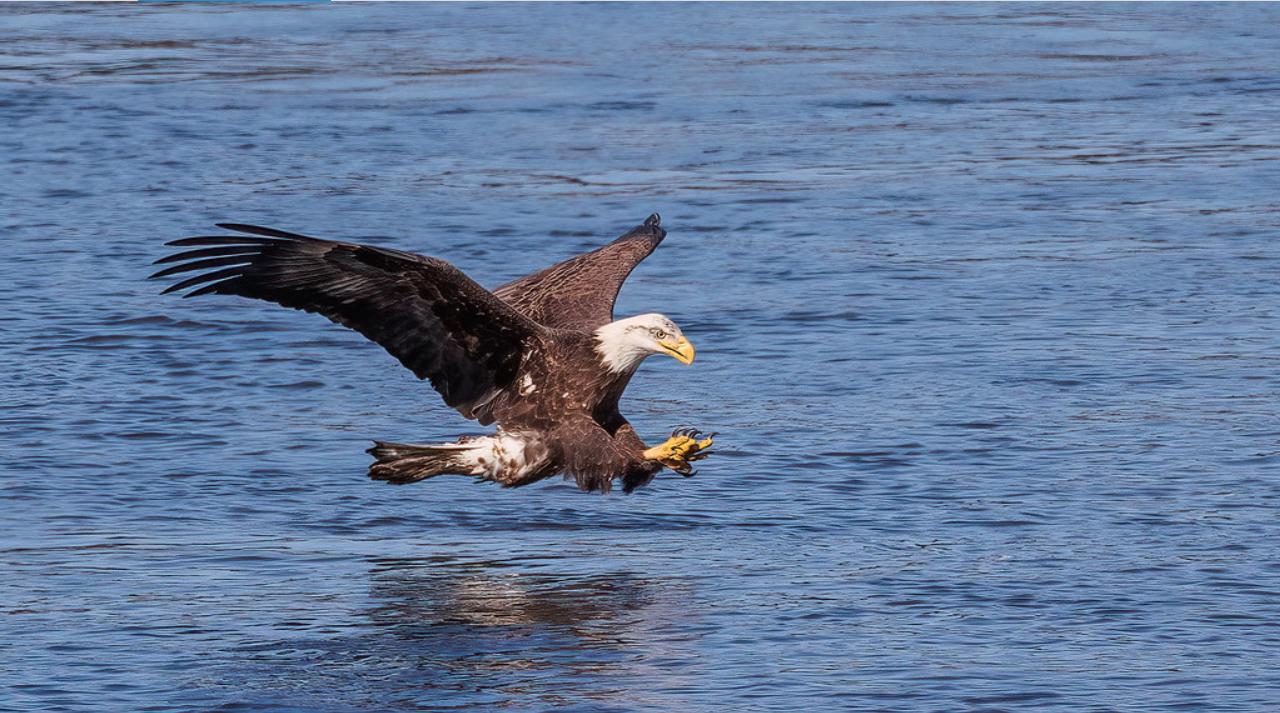
Despite growing up here in the ’50s and ’60s, Gilley never saw a bald eagle until about 20 years ago, when he spotted one perched on a muskrat mound during a trip to the Eastern Shore. Also a longtime photographer, he soon learned about Conowingo and became hooked on shooting the birds in flight and fight.
His visit on the Saturday after Thanksgiving was his fifth of the week. “My son has a B.A. in photography and one day a year he takes pictures of kids with Santa at the mall for a local charity,” he says. “I go, too, and he pays me to use my computer and printer. But I think this year will be my last. I don’t care if it’s raining or some wintry mix outside, I’d rather be here.”